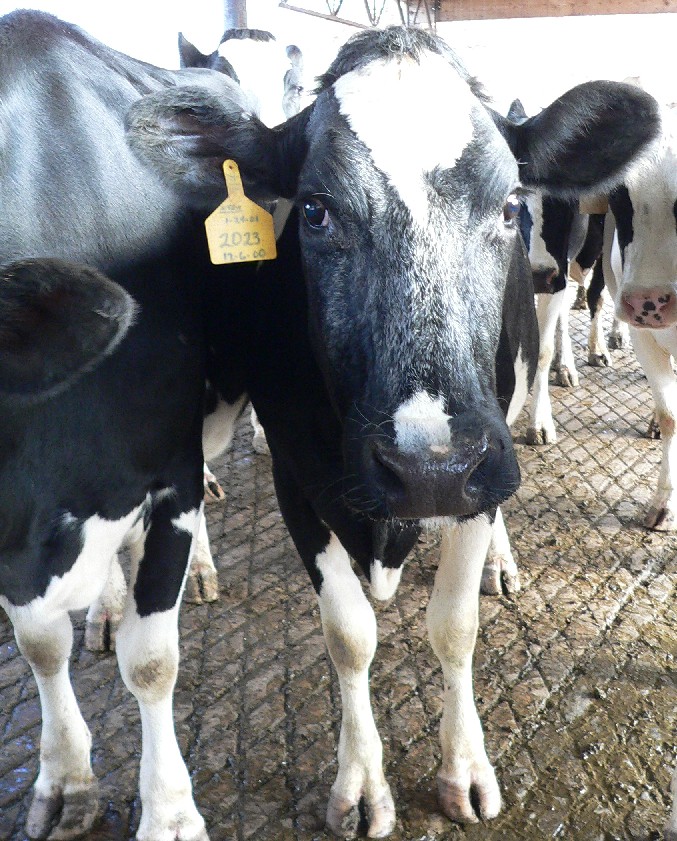But few of the articles I saw about the concealed tiger cub addressed the bigger picture. The smuggling of tigers or tiger body parts is not an isolated incident, or even a rare event. In fact, it happens daily on a massive scale. These operations are largely undercover. On September 15 in Ha Noi,Viet Nam, police uncovered a wildlife-bone trade network operated by a couple at their home. Nearly 900 kg (1,984 lbs) of animal bones from four different locations were confiscated.
The haul included 6 complete tiger skeletons and 6 skulls, 32 kg of additional tiger bones – even though it’s estimated that only 30 wild tigers remain in all of Viet Nam.
The confiscated bones in Ha Noi also included 3 clouded leopard skulls and 1 skeleton, 6 bear skulls and one stuffed bear head, in addition to 730 kg of other wildlife bones and dried wildlife body parts. What are all these bones for?
Very pricey “tiger-bone glue” is thought (erroneously) to improve virility
Tiger bones and other wildlife bones are boiled down by wildlife dealers to make “bone glue,” a popular traditional medicine, and one of the most expensive. According to traditional medicine guides, pure tiger bone glue is taken as a tonic to enhance masculinity, although in reality it has no medically demonstrable effect.
Wildlife and body parts altered to pass for more expensive species
Before a sale, various animal bones are often made to look like tiger bones by carving or grinding them. Even living leopards may be made to seem like tigers before sale. Their bodies may be pumped full of water and agar (doubling their weight) and they may be painted with black stripes. I would find it hard to believe that such a scheme could work, had I not seen, myself, primates painted different colors to resemble more expensive species, in the wildlife markets of Jakarta.
Tigers are on the brink
In 1900, the world had more than 100,000 tigers. Since then, humans have reduced that number to around 3200 in the wild. Some estimates are as low as 1500. But even those numbers seem higher than they effectively are. The 6 remaining tiger subspecies survive in numerous small populations – a population defined as individuals living in close enough proximity to interbreed. These pockets are scattered over 13 countries. Altogether, the actual land space occupied by today’s wild tigers is only about 7% of the area they once covered.
It’s been estimated that none of the isolated wild tiger populations has more than 250 mature breeding individuals. A population that small can be negatively affected by inbreeding, or heavily impacted by a new disease vector or a change in local prey or habitat. When a population gets too small, it loses its resilience and can just collapse for any or all of these reasons. Who knows what that number is for tigers? At 250, they’re no doubt approaching it.
The human threats to tigers
As tiger numbers have plummeted 97% over the last 110 years, the Javan, Bali, and Caspian tiger subspecies have gone extinct. During the same period (1900-2010), the human population has skyrocketed from 1.7 billion to 6.87 billion today. Humans are responsible for the drop in tiger numbers and the extinctions, by a variety of insults. The primary threats to tiger survival are habitat loss, habitat fragmentation, poaching, scarcity of prey, and retributive killing.
Habitat loss includes clearing of forests for timber, palm oil plantations, agriculture, livestock grazing, human settlements, as well as habitat fragmentation by roads and rapid development. Prey are scarce for the same reasons – loss of habitat and fragmentation of habitat, and poaching (for food or trade). Tigers are sometimes hunted and killed by frustrated farmers and livestock herders when the predators are blamed for livestock deaths. That’s retributive killing.
Poaching is a major source of tiger mortality
Tigers are shot, trapped, snared for lots of reasons: to be sold as prestigious skins for the homes of the rich and powerful, for the pet trade (especially as cubs), and largely to supply the illegal trade in tiger parts used for Chinese traditional medicines, such as the above-mentioned “bone glue.” But bone glue is only one of many products containing tiger ingredients. This is a huge problem in Asian countries where many people believe they can acquire the characteristics of the animals they eat.
The BBC’s Andrew Harding reported on a “penis emporium” in Beijing where a dish of “tiger penis hotpot” costs $5,700 (USD). Supposedly, men order it to improve their virility, although Harding’s waitress at the emporium admitted to Harding that eating tiger penis has no effect on virility. Said the waitress, “People just like to order tiger to show off how much money they have.” When consumers will pay such prices for tiger parts, you can imagine the money that tiger poachers or dealers can make. Some poachers or dealers store their tiger corpses or tiger parts to sell in later years, when the animals have become even more rare and prices will be even higher. That sounds familiar. I heard the same thing about the endangered blue-fin tuna which is still overharvested – that some fish dealers are stockpiling the blue-fin in freezer vaults, for the day when the species is extinct, and prices will go through the roof. (See the documentary End of the Line for more info about this.)
Along the same theme, several conservationists in Southeast Asia told me during my recent stay there that the rarest birds and primates are the most targeted by poachers, because the rarest are the most prestigious possessions, are thus most coveted, and will command the highest price in the markets. Some trappers focus on an endangered species as the price escalates, until the animals are extinct or so rare it’s impossible to find them, then the poachers switch their attention to another rare species. In Southeast Asia, many local people will trap whatever they can catch, because they know that whatever it is, they can sell it at a nearby wildlife market – as food, a pet, a skin, medicine ingredient, etc.
More tigers as pets in the USA than there are wild tigers worldwide
In a poll by Animal Planet, tigers were voted the world’s most popular animal, followed (in order) by dogs, dolphins, horses, lions, snakes, elephants, chimpanzees, orangutans, and whales.Is this a factor in Asians’ willingness to pay exorbitant prices to eat tiger parts? Probably. It’s definitely a factor in a bit of news I found shocking: the Association of Zoos and Aquariums estimates that up to 12,000 tigers are being kept as private pets in the United States, significantly more than the world’s entire wild population; 4,000 are believed to be in captivity in Texas alone.
Part of the reason for America’s enormous tiger population relates to legislation. Only nineteen states have banned private ownership of tigers, fifteen require only a license, and sixteen states have no regulations at all. Ouch! That’s another can of worms, which I won’t explore here, although I have prior posts on the widespread sale of exotic (foreign) wildlife within the U.S., and the extensive smuggling of monkeys, parrots, snakes, lizards, even chimpanzees across borders into the U.S. (See list below.)
Tigers need help!
Tigers are critically endangered, predicted by many to be extinct in the wild within 20 years, and protected by the CITES international treaty as well as by various federal regulations of the countries where they live and where their body parts are shipped to. But with international crime syndicates now involved in the highly profitable wildlife trade, and source countries’ wildlife departments sorely understaffed, tigers are freely poached from preserves where they are supposed to be entirely protected. Some tiger preserves have been completely drained of tigers by poachers. Tigers and tiger parts are shipped through airports where security personnel can often be paid off – I was told this myself repeatedly by wildlife dealers in Indonesia. Tigers and tiger parts are smuggled the same way drugs are: in the trunks of cars, in boats, in planes, in suitcases. When the Thai woman was caught with a tiger in her suitcase in August, we all thought, “What a nut! Who would try something so stupid?!” The fact is, anybody and everybody would, everyday. They would and they do. That’s why we have 3200 wild tigers left today, at the end of a century that began with more than 100,000.
What’s being done?
In this year, the Chinese Year of the Tiger, the first ever Global Tiger Summit will be held in St. Petersburg, Russia, from Nov. 21-24. At the Summit, Russia will host ministers and heads of state from the 13 countries that still have tiger populations to sign a declaration on joint cooperation for tiger conservation, and to initiate a global tiger recovery program which seeks to double the number of tigers by the year 2022, the next Chinese Year of the Tiger. That means increasing tiger numbers to 6,400 from the current historic low of 3,200.
What you can do
Stopping the deforestation and the poaching are two essential ingredients to helping these beloved animals rebound. Ways to help with that include:
- support organizations that are working hard on the scene to stop deforestation in the countries where tigers live (such as Greenpeace)
- support the organizations that are seeking enforcement of anti-poaching laws in Southeast Asia, and are seeking to have violators prosecuted (such as TRAFFIC: the wildlife trade monitoring network)
- avoid buying products that contain palm oil
- write your own legislators and ask them to do the same
See World Wildlife Fund’s page about the upcoming tiger summit for suggestions about what you personally can do to help protect the remaining wild tigers. One piece of good news is that tigers are prolific breeders, and given the needed resources, could actually rebound quickly.
A postscript
The 6 surviving tiger subspecies, in descending numbers, are the Bengal tiger, Indochinese tiger, Malayan tiger, Sumatran tiger, Siberian tiger, and South China tiger (not seen in the wild since 1987)
The 13 countries that still have wild tigers are all Asian: India (with the most), Bangladesh, Cambodia, China, Laos, Myanmar, Thailand, Vietnam, Malaysia, Indonesia, Russia, Nepal, and Bhutan.
My previous posts on Southeast Asia:
Orangutans dwindle as Borneo, Sumatra converted to palm-oil plantations August 3, 2010
My search for a wild orangutan in Borneo and Sumatra August 16, 2010
Laws flaunted: flourishing pet trade threatens orangutans’ survival August 23, 2010
Wildlife trade rivals drug trade in profits September 20, 2010
Some of my previous posts on exotic wildlife in the U.S. and animal smuggling:
Monkeys and parrots pouring from the jungle. September, 2008.
The U.S. imports 20,000 primates per year. February, 2010
The great apes are losing ground. March, 2010
Keywords: tigers extinction Global Tiger Summit Russia tiger bones Ha Noi Viet Nam penis emporium wildlife trade tiger glue wildlife body parts pet trade wildlife markets most popular animal TRAFFIC the wildlife trade monitoring network Greenpeace ProFauna Southeast Asia



































